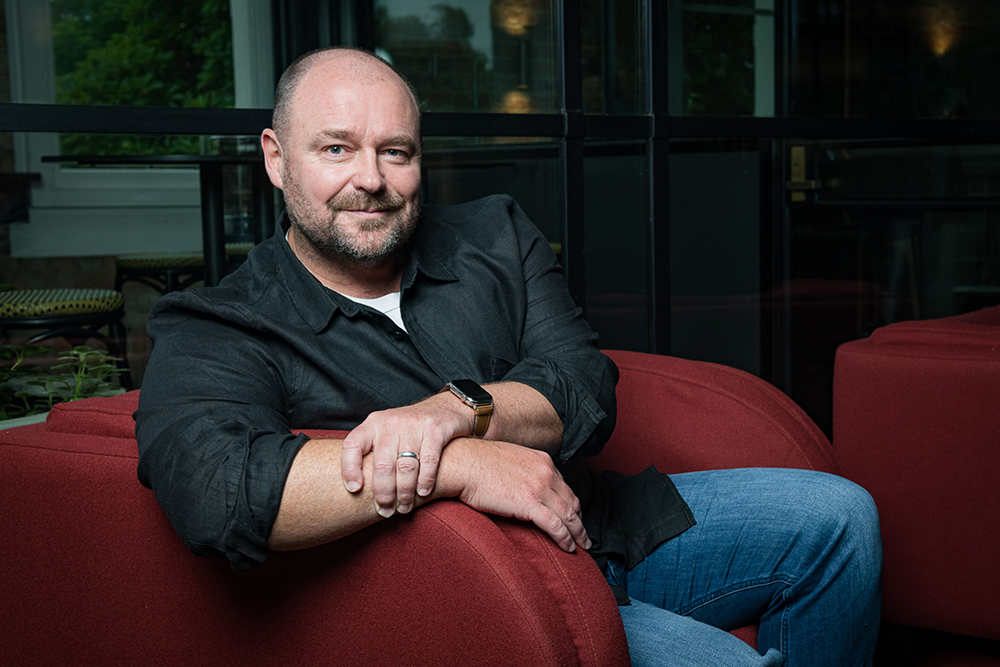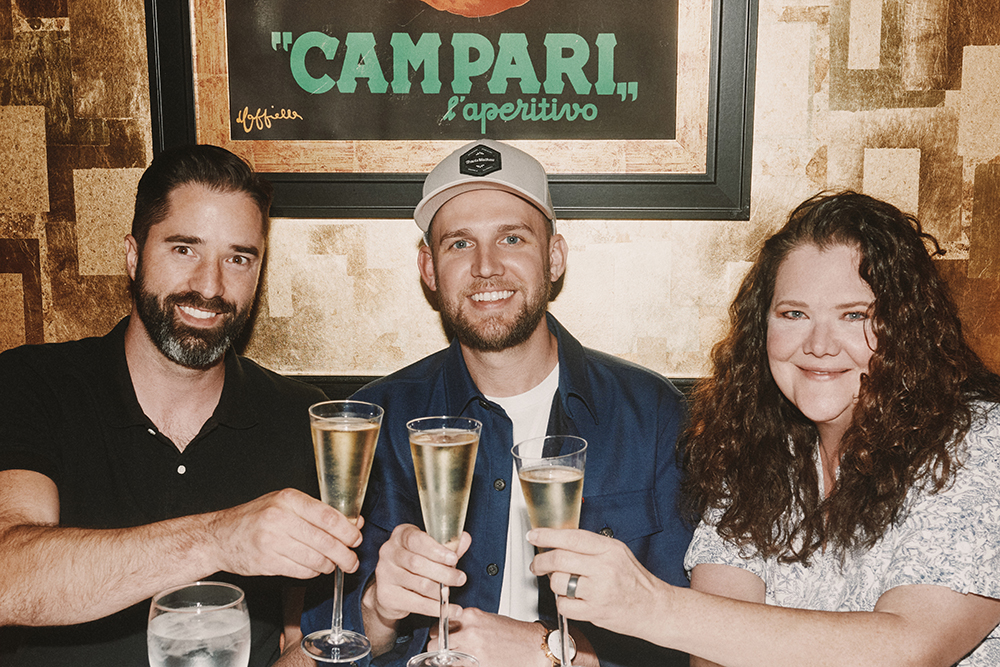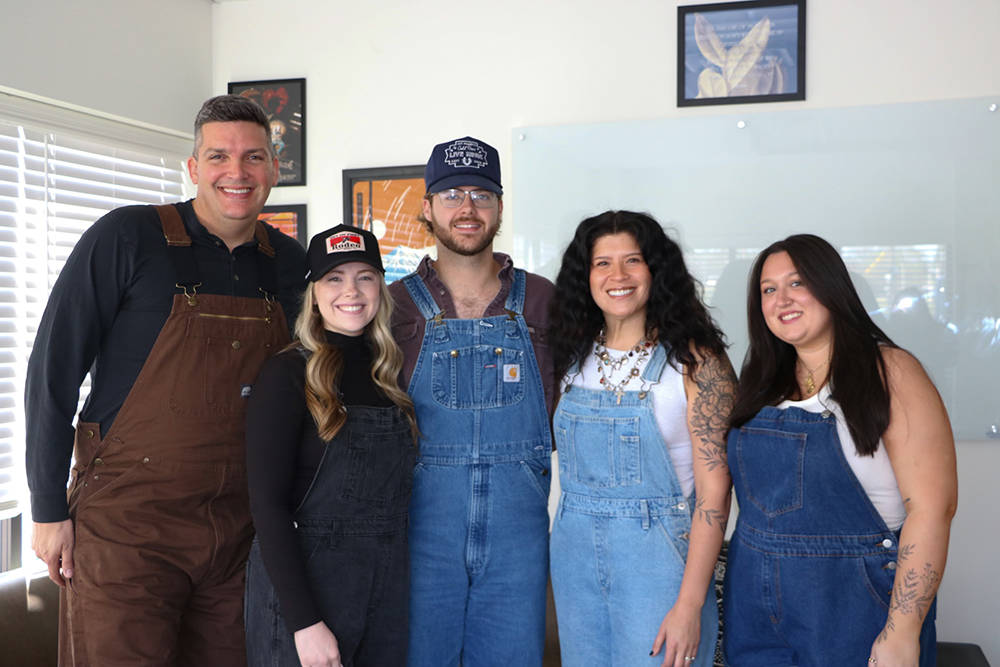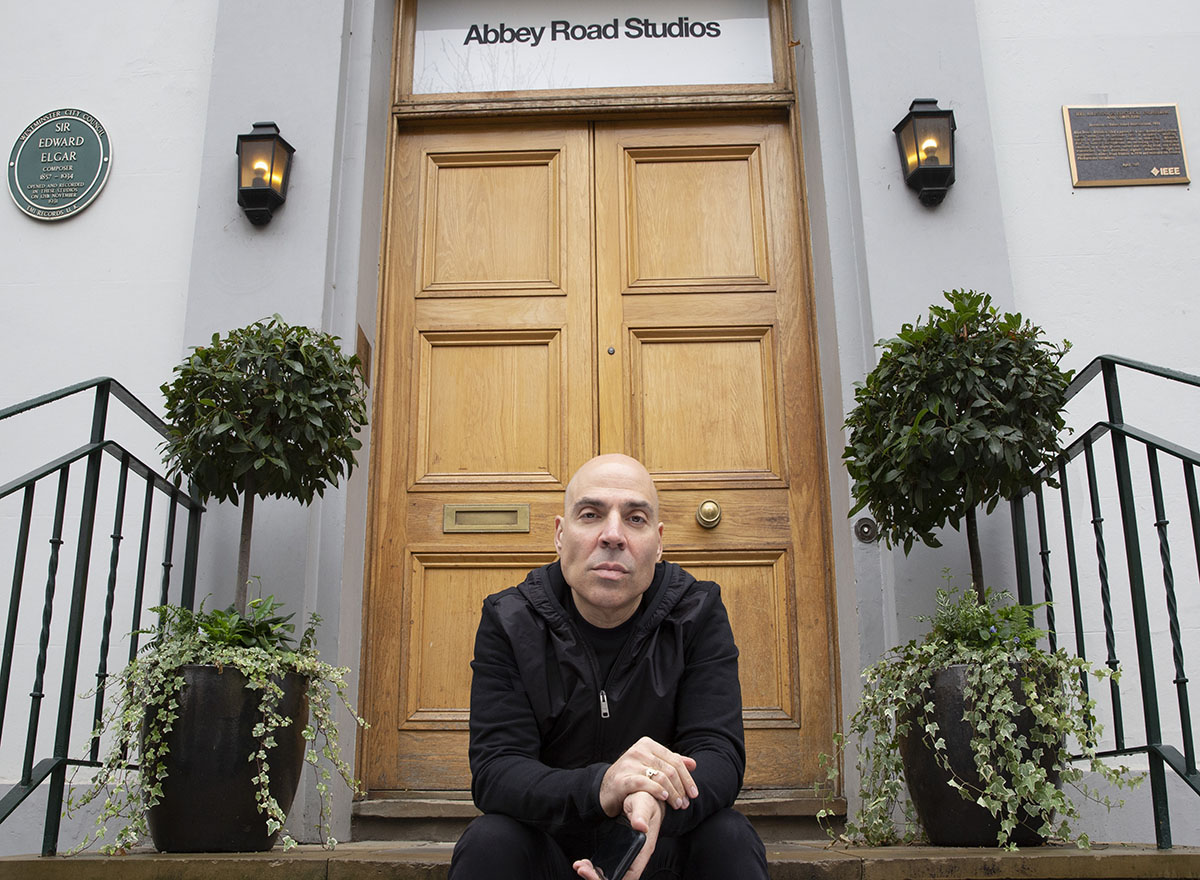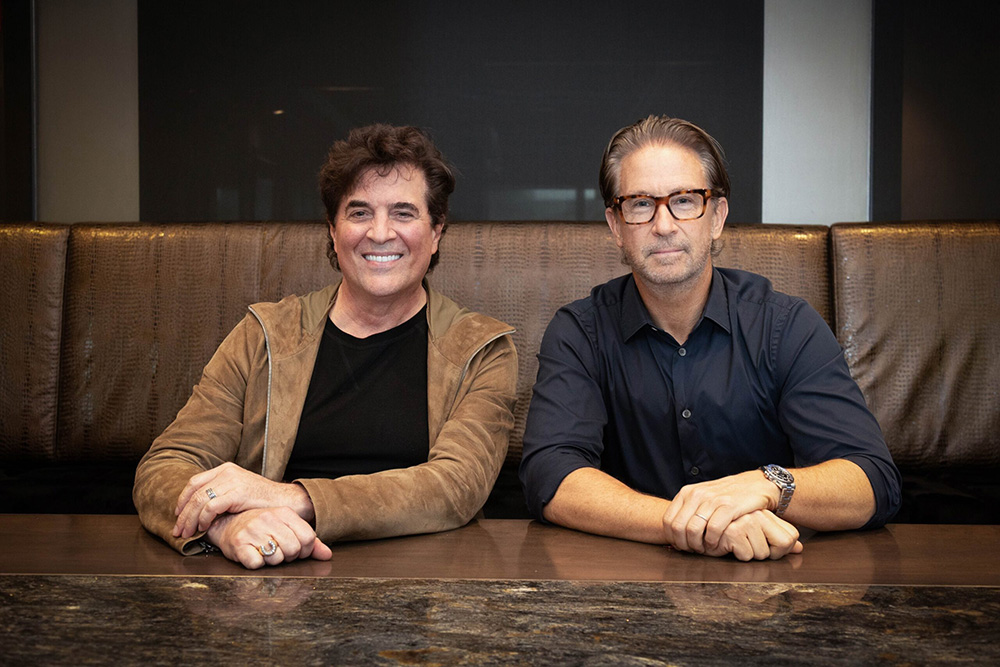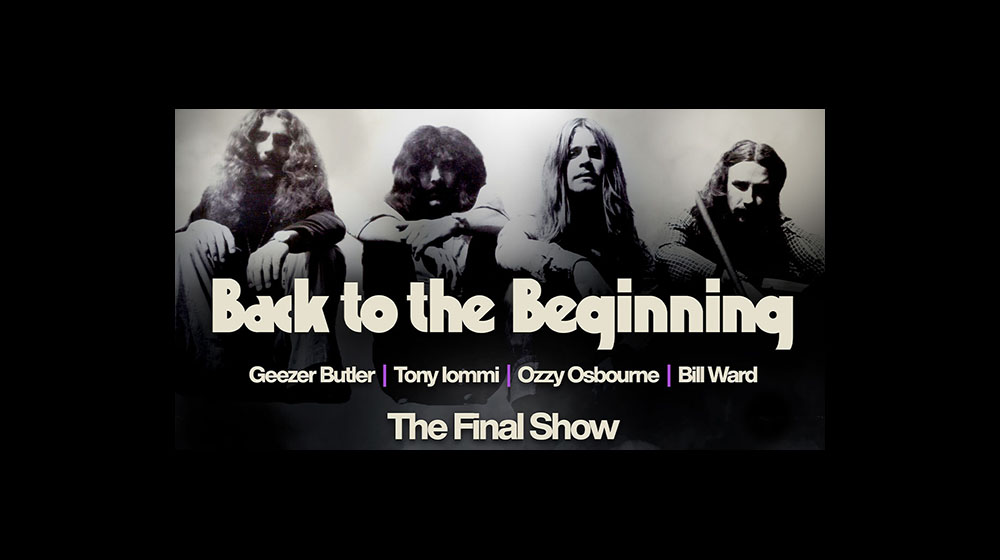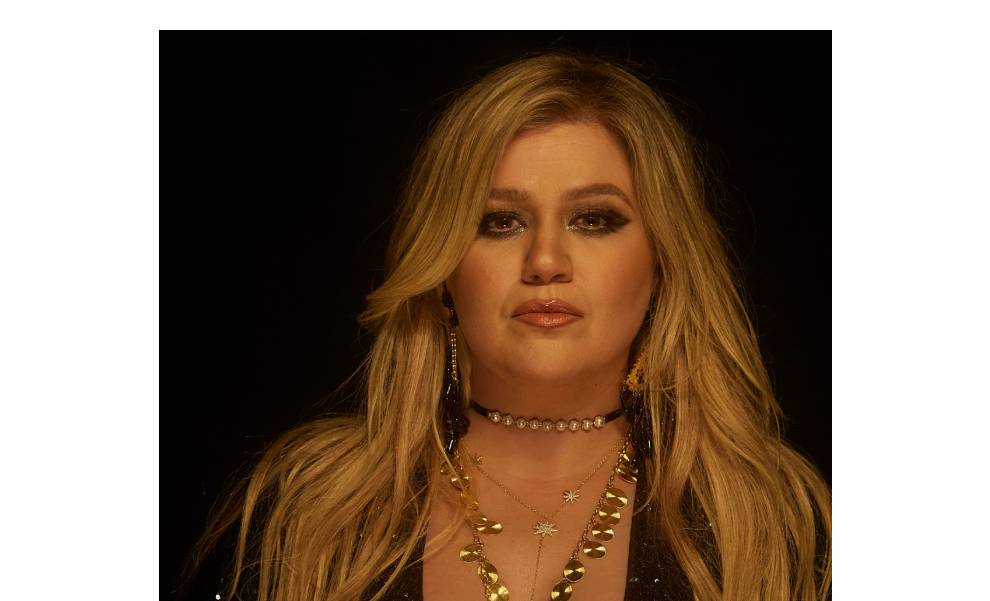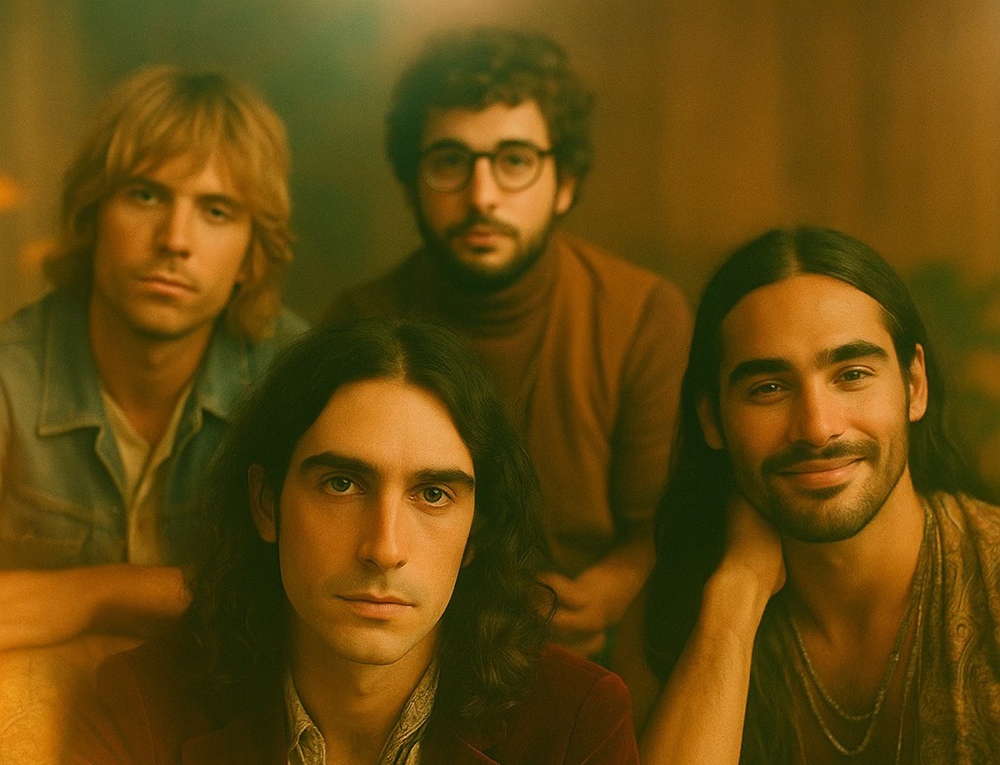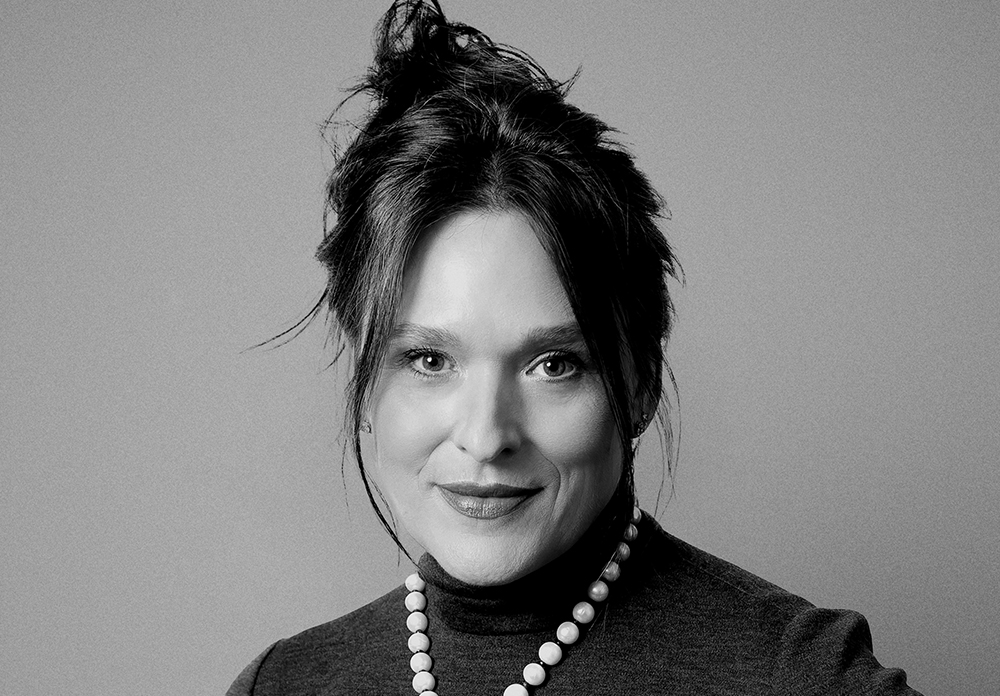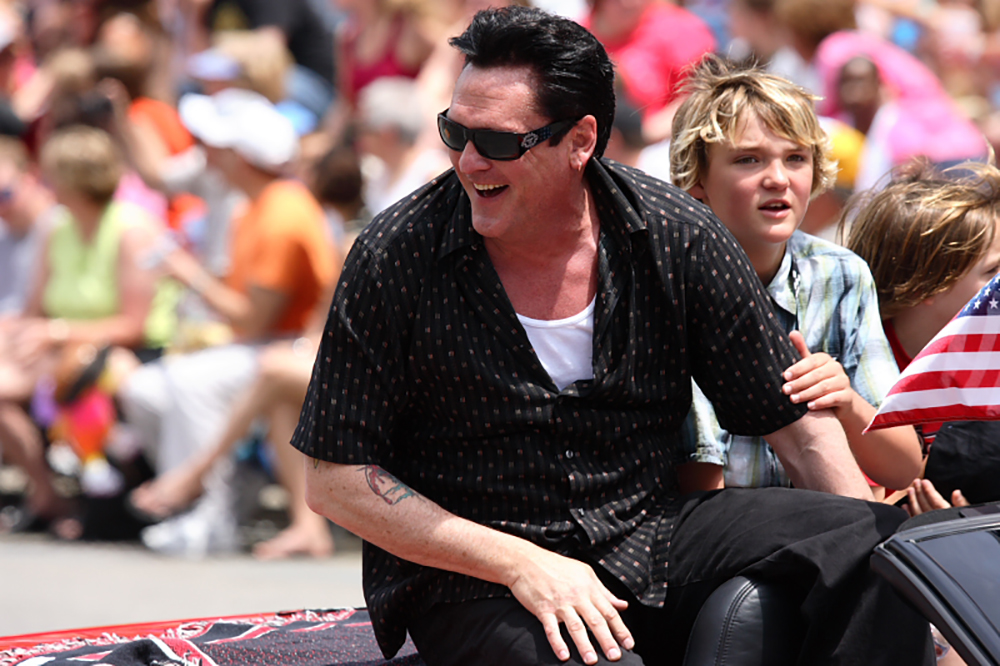This week In the Hot Seat with Larry LeBlanc: Hans Schafer, senior VP, Live Nation Latin.
When Live Nation officially formed its Latin department late last year, Hans Schafer was found to have made the jump there from market competitor AEG/Goldenvoice.
Schafer heads Live Nation Latin, a national department focused on increasing the promoter’s presence in the growing Latin live events market in the United States, including touring, festivals, and artist development.
Based in Beverly Hills, California, Schafer reports to Bob Roux, co-president, Live Nation U.S. Concerts.
Schafer almost immediately hit the ground running once he arrived, overseeing both the long-awaited return of the Versus World Tour with Gloria Trevi and Alejandra Guzmán to the United States: and the North American leg of dates for Luis Miguel’s ¡México Por Siempre! tour. As well, he has been ensconced in the planning of upcoming tours with Romeo Santos, Enanitos Verdes & Hombres G, and Juanes and Mon Laferte.
Tucked in Schafer’s pocket are a fistful of unannounced tours for other Latin heavy hitters.
He’s busy operating on all cylinders these days.
Before his jump to Live Nation, Schafer was dir. of Latin Talent for AEG/Goldenvoice (2013-2017) where he oversaw the department’s national booking strategy and marketing teams.
Prior to joining AEG Live, Schafer served as dir. of brand partnerships for Universal Music Latin Entertainment (2011-13), overseeing fully integrated partnerships for the company’s massive artist roster. Previously, he was a member of the programming team (2005-2010) at mun2, the NBCUniversal-owned cable and satellite television network, where he oversaw talent and artist relations, and bookings for the bilingual cable network.
What does your mandate at Live Nation cover? “Just go out and look for opportunities, and don’t screw up!”
I have to tell you that is really is what they have brought me to do. They are really bringing in my expertise and trying to define what this business looks like for Live Nation. Expanding everything from artist development to festivals and to touring. It (our activity) will not only be limited to the U.S. There’s so much potential growth for Latin (music) and Live Nation outside of the U.S. in terms of looking at South America, and even Europe and Australia. There are opportunities there. The company has a strong appetite for growth, and that has been transferred over by the kind of support and trust in me to build out this department
Live Nation has, in fact, been quite active with Latin music. In 2017, the company produced such high-flight events as the Enrique Iglesias and Pitbull Live! tour, Prince Royce’s Five Tour, as well as Ricky Martin’s Las Vegas residency. It also booked and promoted events by Mana, Marco Antonio Solis, Ana Gabriel, Gerardo Ortiz, Miguel Bosé, Los Temerarios, and Alejandro Fernandez. Plus Shakira’s postponed 38-date El Dorado World Tour is now set to kick off June 3rd in Hamburg.
Live Nation is very much in the game in terms of some of the major tours that they were doing. They understand the growth opportunity, and the importance of being in this (Latin) space, and have charged me to grow this department out. To be clear, while Live Nation is already in this space, it’s growing so much that they wanted someone to really dedicate a touring division, and to continue to grow it because the numbers are showing that it is going to continue to grow.
You have two outstanding North American tours on tap: The long-awaited return of the Versus World Tour to the United States with Mexican superstars Gloria Trevi and Alejandra Guzmán; and the North American segment of Luis Miguel’s ¡México Por Siempre! tour. With Gloria Trevi and Alejandra Guzmán, you’ve put two heritage Mexican acts together as a package, and it has made for a sensationally successful set of tours last year and this year.
This is one of those things where it was completely unexpected how big it was. It was just not a one plus one equals two. It was a one plus one equals five in terms of the business that they generated. They really did strike a chord with fans who were really re-living how important their time was when these two were really revolutionaries in a way.
While Alejandra has sold over 20 million records, Gloria was once the bad girl of Mexican music, its Madonna. The Latin femme fatale of the ‘90s.
She was the femme fatale. She was this symbol of rebellion for women when she had her hair down with ripped jeans, and then to see what she went through from a personal note (including four years in prison in Brazil before being cleared of charges), and how she overcame that. She really is a story of success, a story of a woman overcoming every obstacle in life.
This return of their Versus World Tour to the United States kicks off March 7th at the State Farm Arena in Hidalgo, Texas and ends April 14th at the Hollywood Bowl in Los Angeles.
I did the first half of the tour last year. We sold out two Staple Centers, and an Anaheim (at the Honda Center) on one run. It really is one of those one + one equals five type of tours. I am just happy that this is going to be the final run, the final shows that they are doing both in the U.S,. and in Mexico.
And Canada, March 20th at the Sony Centre in Toronto.
And Canada, the first time that we are taking them to Canada. That was a big thing.
The 18-date U.S. segment of the tour finishes off at the Hollywood Bowl, probably the finest outdoor venue in America which has provided a showcase for the world’s greatest musicians. You could have returned to Staples, but the Hollywood Bowl is the bastion of old Hollywood.
It is. It is, and it is something that they both wanted to achieve. I feel that it is going to be something different. We could go back to Staples or The Forum or another arena but, really the experience of the Hollywood Bowl is what is going to make the closing night of this tour unique. It would be a once in a lifetime experience to see this show at such a special venue.
How cool is that to be doing the Hollywood Bowl?
It doesn’t get any better than that. Not for me and I’m not a L.A. native, but that’s just such a magical experience.
When you oversaw the first half of Versus World Tour you hadn’t joined Live Nation?
No, I was still at AEG/Goldenvoice.
Was the Versus World Tour something you were able to bring to the table while discussing coming to Live Nation?
Yeah, absolutely. All of it is really open. Relationships are so important. That is something that I have really built my career on which is standing by the act, by the artist. Certainly, my relationships with the acts, and with managers are what allows me to bring things to the table. At the end of the day, the company I would have joined or would have still stayed with would come with those relationships.
The other tour is 22 North American dates, starting May 4th, with Luis Miguel. With 33 albums, 5 Grammy Awards, and over a million record sales worldwide, he is one of the top male singers in the world.
He’s back with a punch. We are going to see a really interesting year for Luis Miguel. It’s been outstanding, his comeback in Mexico. I think that they are up to 16 shows sold out. The global tour starts in Mexico and will be followed by the U.S. tour.
His shows in Mexico are being promoted by OCESA.
We are the U.S. promoters, but he will tour extensively throughout Latin America as well. We just went on sale with the dates, and it has shown how great his appeal is. He has been out of touring for some time, and his comeback (to touring) is definitely being felt with the on-sale. We had an incredibly strong on-sale. We will be adding some additional shows based on how shows perform. There’s an exciting (television) show that will be airing sometime in April or May. It’s a 13 episode series of his life. Telemundo, I know has it for the U.S. Netflix has it for Latin America. If you know some details of Luis Miguel’s life, it is a very exciting one to see it being transferred onto a series.
[NBC Universal Telemundo Enterprises, and Gato Grande Productions–a joint venture between MGM and Mexican entrepreneurs Miguel Alemán Magnani and Antonio Cué Sánchez Navarro—have announced an agreement giving Telemundo exclusive U.S. broadcast rights to the authorized TV series based on the life of Luis Miguel. The series will have its world premiere on Telemundo, and is being produced by Gato Grande Productions.]
You are also currently overseeing tours with Romeo Santos as well as Enanitos Verdes & Hombres G.
Romeo’s (Golden) tour is doing great. We just had some record-breaking numbers in New York which is his hometown (being from The Bronx). We have an Enanitos Verdes & Hombres G tour as well that is going on. Argentina and Spain are coming together in a jam-packed, fantastic tour, and Juanes & Mon Laferte is also hitting the road. You will be seeing some announcements probably next month of our involvement in Latin techno.
[Romeo Santos–the King of Bachata–is clearly in demand. His current Golden 23-date tour has brought him to new markets in the American Midwest, and in such Canadian cities as Montreal and Toronto that have been largely untapped for Latin music.]
A rock-pop band from Argentina, Enanitos Verdes; and a Spanish pop band, Hombres G. Again putting together two major acts as a package makes for an attractive box office.
The second date of the tour with Enanitos Verdes & Hombres G is at the Hollywood Bowl (June 2nd). Two completely different countries, very similar genres, and again going back to that thread that really ties in musical collaborations. Well, this has been one of them that has shown a tremendous amount of potential within the U.S. I did a few shows with them last year while at AEG/Goldenvoice, and now we are doing the full tour, and building out markets at this stage in their careers, These are very established bands that are now playing rooms that they have never played before, and they are selling out shows in places that they have never done before. It goes to show you that there is still work to be done even with established bands. There’s a tremendous amount of growth opportunities for them in Europe.
Driven by streaming services, by the unprecedented growth of mobile phones, and on-going adoption of social media, Latin music has had a seismic-styled growth. These factors are driving the popularity of the Latin artists we are seeing right now. Plus there’s a global Hispanic population of 500 million people–58.6 million people in the U.S. The popularity of Latin music is expected to climb dramatically in upcoming years with more advances in technology for mobile phones, and increased popularity of streaming services. The sector’s economic heft is becoming more and more evident.
Yeah, it’s huge. We overinvest (in content) and I think that part of it is sort of it being really your main computer, your main access point. It is almost like that you don’t have…in a lot of cases it is true people don’t have a computer. They may be just working off of their phone in terms of communicating, social engagement. Consumption shows how all of that stuff really operates. Even when I was at mun2 (an NBCUniversal-owned cable and satellite television network) we are talking 2005, Hispanics were already over-indexing in the U.S. over any other ethnicity.
Fan demand for live events is rising across the board, and the demand for Latin live events in the U.S. in lock step with the overall market. Still mainstream America has largely undervalued the growth of the Hispanic market. Sure they took notice of Gloria Estefan Menudo, Ricky Martin, Selena, Marc Anthony, and Shakira in the past, and have embraced J Balvin, Nicky Jam, Pitbull, and Daddy Yankee of late, but they largely missed the enormous impacts of Hispanic artists like Puerto Rican phenomenon Ozuna as well as Colombian reggaeton artists Maluma and Luis Fonsi until recently.
And I think that YouTube and streaming with Spotify and Apple Music are changing the game. That is really giving (Latin artists) the tools; where everybody is saying, “Oh my God, this is massive.” It was there the entire time, but there was no way to quantify what was happening. Having streaming, and YouTube have become that tool. In 2017, 6 of the top 10 most watched (YouTube) music videos were all driven by Latin acts. That’s huge and that’s worldwide.
[In December, YouTube released a list of its Top 10 music videos worldwide for 2017. At the top of the list stood Luis Fonsi and Daddy Yankee’s catchy hit “Despacito,” but Latino artists J Balvin, Maluma, Chris Jeday, and Nicky Jam were also present.]
In 1991 the week Billboard adopted SoundScan as a method of tracking sales of music, instead of calling music stores, country music topped the Billboard 200 Album Chart for the first time in years. Few industry executives realized that country artists had been selling big numbers. The same with streaming and YouTube data now showing the entertainment industry and mainstream audiences the inroads made by Hispanic artists.
However, while “Despacito” (Luis Fonsi and Daddy Yankee), and “Mi Gente” (J Balvin with Willie William) both enjoyed similar global success upon their release, neither gained popularity in the U.S. until the Justin Bieber and Beyoncé remixes were released, respectively. The “Despacito” remix became the first Spanish-language single to reach #1 in the U.S. since Los del Rio’s unforgettable hit “Macarena” in 1996.
“Mi Gente” is a triumph of global collaboration. The song, originally recorded by French artist Willy William, was redone by J Balvin in Spanish, featuring William, and then was remixed yet again in a bilingual version featuring Beyoncé.
And it was already massive. And it’s great not to take away. It really validates a lot of what we are doing, and what we are trying to push. Seeing these acts come onboard and do the songs either in Spanish, as with Beyoncé and then Bieber, just the fact that they are on the song, right? You used to see the crossovers, people looking for opportunities between the Latin market, and the English-speaking market which was really grabbing an act like Balvin and featuring him on an English song. That was the way into the Latin Hispanic market for these general market acts.
Now you are seeing the opposite.
Yes. You are seeing (American rapper) Cardi B being featured with Ozuna (“La Modelo” in 2017), and Nicki Minaj jumping on a Bad Bunny track (“Krippy Kush”) with 21 Savage (and Farruko). You are seeing Demi Lovato on (Luis) Fonsi with “Échame La Culpa”) etc. etc. It’s exciting. It is really really exciting to see what’s going on, and to have Live Nation really put a stake here saying that, “We want now a dedicated team to amplify what’s going on.”
[In August 2017 the music video for the original version of “Despacito” broke the record for most-viewed video in the history of YouTube by surpassing three billion views. It is now the only video to reach four billion views. The video was the top music video of the year in more than 50 countries, according to YouTube. The original video for “Mi Gente” reached 1 billion views in 103 days, the fourth-fastest to do so in the history of the platform.]
Each Spanish-speaking market is different, but the number of media conglomerates that are strong is a factor in bolstering Latin music. Telemundo Entertainment and Univision Radio are big allies for Latin American music in the U.S. In Mexico, Televisa is the big one, and In Argentina, there’s Telefe and Canal Trece. In Colombia, there are Caracol and RCN. Each one of these networks wield considerable power and have distinct programming on varied platforms. These media companies are obviously a big component in expanding the popularity of Latin music regionally.
On a worldwide basis, actually. Each one contributes to local talent as it does for international talent coming in over your trusted sources. They are big proponents of pushing out new media that is up to par with what we are seeing in the rest of the world. I think that you are seeing that transition across all countries. Just to step in line with what you are seeing with the music videos.
What’s intriguing is that as English-language artists continue to downplay videos in their marketing, excepting the leading pop artists of the day, so many of the Latin artists, including Luis Fonsi, J Balvin, Enrique Iglesias, Ozuna, and Pitbull, have doubled down in making great videos.
One hundred percent. With the music videos, they have invested heavily in terms of quality over the past 10 years. Some of the stuff that you see today is movie quality.
The videos aren’t over gimmicky. The video field in the Latin world is just good.
It is just good, and you are starting to see that as well on television even. Some of these acts are now looking at other opportunities. You are seeing that more and more.
Videos are credited with enabling Hispanic artists to reach international audiences.
I think that the video really brings it full circle especially when you are talking about it being translatable. Is it transferring over to other cultures? Video is such an easy way for people to capture what can be said or just be engaging as entertainment to go along with the song. That is a big proponent of bringing the song full circle. It’s not just the Spotifys and the Apples of the world or the YouTube for the song itself, but the videos are a huge part of what is going on. Look at the YouTube numbers. Again, going back to that stat of 6 out of top 10 videos are Latin.
While there’s a rich, varied music culture in Mexico, it isn’t the same as in the United States.
No. I think that part of it is because of the growth of the Hispanic millennial in the U.S. It really is a different audience in a lot of ways. Their growths are very different. I think that what we have here (in the U.S.) is that the Spanish millennial is really more focused on the celebration of tradition and culture; but part of that culture is also really influenced, and shaped by their day-to-day which is vastly different than in Mexico. So there are naturally going to be a lot of acts that will just speak more toward Mexico, but we are also seeing a continued growth in Latin concerts, it’s as you said earlier right in step lock with the rest of the market.
What you are describing is not unlike the impact of the migration of Afro-Americans from the Delta to northern U.S. cities in the 1920s and 1930s. Once settled in Chicago, Detroit and other urban markets in the north, these people didn’t want to hear rural blues which reminded them of back home. They were instead attracted to electrified urban blues, and later R&B. The same now with people from Mexico who’ve come to America. They will know traditional regional Mexican music, but they want to experience that music a bit differently.
Yes. I think that you hit it right on the point. I’ve been pushing regional Mexican music since my days at mun2. Moving to California gave me a completely different perspective on that music, and on the culture, and the people that consume that music. To your point, one of the things that I could see was that the first generation talking nostalgically; about whether it was crossing the border or having family on the other side, and not seeing them. I also have seen this new generation of regional Mexican acts that are U.S.-born and bred and U.S. Hispanic millennials that speak Spanish–that also speak English–and they are into regional Mexican music, and it doesn’t sound exactly the same. They are not talking about the same things that the previous generation did. And that is the thing that I love.
The next generation becomes closer to the culture of their adopted country.
I think that you said it well. Part of what also happened in the U.S. is that there was a time when people were coming over to the U.S. To my perspective, and my upbringing, I was born in Miami of Venezuelan parents who came to study. They had me here. My dad ended up going back. My mom said, “I’m going to stay and finish school, and I’m going to continue living here.” I grew up as a Hispanic living in the U.S., and I lived in Spain for a few years. I promise you that I am Latin though and that I speak Spanish.
You grew up with Venezuelan, Spanish and German roots in the melting pot of Miami.
I did. I was born and mostly raised in Miami. I did grow up in the melting pot, and that sort of shaped my roots, my culture, and my tradition with things that were really not my culture, and tradition. But we could certainly identify with other people that spoke the same language. I started speaking Spanish before I started speaking English, but English just naturally overtook in school, right? But I do remember as well that there was a time period, even in the melting pot of Miami, where Hispanics, the majority for many, many years, and there was this sort of sense of trying to blend in, and not necessarily try to be as proud (of being Hispanic) as what I see today. I see much more on screen and on TV people that look and sound like me that are more my heroes, and that is motivating. And now, for me to be in a position where I can be the platform for new talent, is part of what obviously I want to accomplish.
Where did you live in Spain?
In Madrid. It is such a beautiful place. The ham, which is called jamón ibérico (Iberian ham) is what I miss the most. I was 17 when I moved there, and I was there for three years. A great time to be in Spain, let me say. I am a huge flamenco aficionado, and being in Spain during that time was just extremely fruitful, musically.
You attended school in Spain?
I did. I moved there because my stepfather had been transferred there. I was in high school, and then I started college. I was studying in El Escorial in what used to be the vacation palace for Kings and Queens which is about 45 minutes outside of the city. It’s actually a building complex that serves multiple purposes. A palace, a monastery, and a pantheon among the key areas. An incredible architectural marvel. The university program took place within the monastery, and it was such a unique environment for studying. It was such a unique experience going to a school where these old Franciscans used to be.
What did your parent do?
My stepfather is also in the music industry. He is the chairman of Universal Music Group Latin, Jesus Lopez (Chairman/CEO, Universal Music Latin America & Iberian Peninsula). He’s my stepdad. I grew up with him as my father. My mother also used to be in the music industry once upon a time. No longer. She was a label manager at BMG Latin back in the day. Carolina Schafer at that point. It feels like I’ve been in the music industry my entire life.
How did you get to Los Angeles?
I started with mun2 in Miami and they transferred me over. Part of the condition of me taking that job was that I really wanted to move somewhere else. New York, San Francisco, or L.A. The opportunity with mun2 came down, and they moved me out to California without me ever visiting L.A. It was a wild ride. It’s been a wild ride.
As a non-Hispanic, it’s puzzling understanding all of the different musical genres, and different chart categories displaying regional and cultural differences.
I have seen cases where somebody wanted to do a Latin festival, and they said “Let’s throw in all of the Latin stuff, all of the Latin stuff that is out there. Throw in some regional Mexican, reggaeton, bachata, alternative, dance, and some rock and roll.” I was sitting there looking at this thinking, “This has got to be the most incredibly uninformed thing that I have seen because it really is……
You are talking about a festival booker pigeonholing Hispanics by a stereotypical labeling of their music consumption.
Well, it is treating it as if every Spanish-language artist is the same genre. We can speak the same language, but we love different types of music. You have to be able to take this thread, this musical thread that ties everything together so that the musical experience is really well-curated for the fan. I think that you can mix some of the genres within the same festival and, if it’s a multi-day festival, you can separate the days out so that thread makes sense. It’s not exclusive to say, “I only listen to salsa” or “I am only a reggaeton fan.” There are things that crossover, but it just takes sort of a unique skill, and an understanding of the market to know how you can bring that thread together.
That intermingling is apt to be driven by YouTube, by streaming, and by the live sector as Hispanics become even a greater part of the fabric of American culture. As non-Hispanics get used to knowing the artists and the music. For years, as I said, Latin music in the mainstream was regarded as being Gloria Estefan, Menudo, Ricky Martin, Selena, Marc Anthony, and Shakira. Many people couldn’t get beyond that. Today, they at least will know Shakira is different from…
Romeo Santos.
Yes. Well, we aren’t that many years away from when Afro-American artists weren’t allowed on MTV. CBS/Epic had to fight to get MTV to play the videos for “Billie Jean,” and the electrifying Bob Giraldi directed “Beat It” (while CBS/Epic had ponied up $250,000 for the “Billie Jean” video, it refused to underwrite “Beat It.”). Michael Jackson made culture accept a person of color. While gatekeepers like MTV are gone—though radio is still important–Spotify, Apple Music, YouTube, and the videos themselves level the field for Hispanic artists to further impact on mainstream America
I could not agree with you more. It is what has given us wings in the last few years. So yeah, I agree with that 100%.
As more Latin artists cross over, we won’t likely even think of the sub-genres.
That is really what we are working toward. I am not sure how far down the line that is but it certainly is where we are headed without question.
Latin, as we’ve discussed, is translatable to other cultures, right?
Yeah, 100 %. I think that the language is becoming less and less of the emphasis for a crossover because people want to dance. People want to have a good time. You can hear it in the melodies, and it’s enough for them to just hear the melodies and sort of sing aloud the melodies, and follow the rhythm of the song. Then you will find people who will go through the effort of wanting to listen to what it is; and wanting to listen to what they are saying. There are some acts that have important things to say. Residente (René Pérez, frontman, and co-founder) with Calle 13 is one of those that I think is going through a great moment right now with his career.
He is a staunch champion of social justice.
He has always been such a prolific artist and wanting to give his voice to change and for peoples’ needs and really amplify messages of different communities throughout the world. It is all translatable and it is really exciting to see it. It is really, really exciting
[Founding member of Puerto Rican rap group Calle 13, René “Residente” Pérez was arrested on Feb. 27th in San Juan’s Luis Muñoz Marín International Airport for allegedly assaulting cameraman photojournalist, William Alberto Rodríguez. According to El Vocero, Residente is scheduled to be in court on March 17, and is no longer in custody.]
You might recall two decades ago that rap and hip-hop were considered too American and too urban to export overseas, but Jay-Z, Eminem, Kanye West, 50 Cent, G-Unit and others began touring Latin America, the Caribbean, Africa, the Middle East, Europe, and Southeast Asia In the future, much of your work with Latin artists may be focused on international touring. Certainly with many of the acts that are now coming to the forefront with the advent of greater penetration and distribution through the internet.
We are already doing it; We have a few shows confirmed with Juanes in Australia. There are more and more of the urban acts headed to Europe. Balvin has already been there two or three times. Bunny is going on his first or second tour of Europe. I think that this will be his second leg. But you are seeing the crossover there, and I have to go back to streaming, and the act of that music being heard. As you said, it would never have gotten there. It would never have traveled because there was no distribution channel. There was no radio station format that would play it, and people could listen to it.
The first time I was in the West Bank with a group of Western music industry executives two years, we met some kids in the Qaddura Refugee Camp near Ramallah. One of them had a more advanced mobile phone than any of us. He had the newest available android mobile. I had an iPhone 6.
(Laughing) Thankfully, you didn’t pull out a Blackberry. I was a hardcore Blackberry user as we all were at one point.
After the recent Grammy Awards, there was a widespread criticism of the lack of female representation in the music industry. A recent analysis by Somos Ruidosa underscored the lack of female nominees in three internationally-primary Latin American music awards in 2017: The Latin Grammys, Billboard Latin Music Awards, and Premios 40 Principales. Somos Ruidosa claims that out of 504 nominations throughout the Spanish-speaking music industry, only 68 women were nominated. Of the 117 winners, only 14 were women. Not a great track record.
Not a great record. No, it’s not. I would like to see more of that change. I certainly would like to put my part in being supportive of that. It’s a necessary thing, I think, to bring all this to life otherwise those stats wouldn’t be there. I’m hopeful, and supportive of seeing more women being nominated and winning awards, producing albums, engineering, and working at all levels. I think that we have a responsibility to give an opportunity, we need to make an opportunity, and be supportive of that.
Somos Ruidosa believes the heart of the problem lies not in the lack of female winners, but the low number of nominations women receive to begin with. I’m hopeful that if someone wants to be a producer or a manager or whatever that they are able to have the opportunities.
I don’t have the answer, but I want to be encouraging. I would like to see changes and more opportunities for women coming into our field.
How long were you at AEG/Goldenvoice?
I was there for about 4 1/2 years.
Patricia Flores has joined you from AEG/Goldenvoice at Live Nation Latin as VP of Marketing. You two obviously worked together at AEG/Goldenvoice.
She was there even before I was there. I not sure exactly. I think six or 7 years.
[Patricia Flores had served as head of Latin Marketing at AEG/Goldenvoice, overseeing all national marketing strategies and campaigns for acts such as Mana, Juanes, Romeo Santos, Wisin & Yandel, Enrique Iglesias, Pitbull, Prince Royce, Calle 13, and more. Prior to AEG/Goldenvoice, she spent 9 years with Universal Music Latin in Los Angeles and Miami.]
A few months before you came to Live Nation, Rebeca León left her post as senior VP of Latin Talent at AEG/Goldenvoice to focus her efforts full-time on her management company, Lionfish Entertainment which handles Juanes, and J Balvin. Rebeca was there 11 years. Did you report to her?
I did. She started the department, and I reported directly to Rebeca.
You will obviously continue to work with her.
We are currently working (together) on the J Balvin tour which will be going out later this year.
What was your experience in working at AEG Presents/Goldenvoice?
I was specifically under Goldenvoice which had a really unique environment different from anything else that I had done because I didn’t come from a live background. I absolutely loved the time I worked at Goldenvoice. It is filled with incredibly talented people and individuals that are very passionate about what they do.
Plus the staff there is said to be given considerable latitude as well.
A tremendous amount. A tremendous amount of latitude and a tremendous amount of trust in what we were doing. It was great. I am very thankful for the time that I was there.
Why the decision to work in the live music sector?
I always felt that you had to have a well-rounded experience to really break an act in the U.S. and that, at the end of the day, is what I want to do. I had the TV, and the production experience, I had a bit of a label experience; and live seemed like the natural step for me, and also I saw at that moment the future of where acts are being broken, and where the business is really being driven.
Let’s talk about your time at Universal Music Latin Entertainment which has had a deep footprint in the Latin community with Universal Music Latin which launched in 1997, as well as with its distribution of such pivotal Latin labels as Disa Records, Fonovisa, Machete Music, AfterCluvDance and, of course, Capitol Records Latin which launched in 2012 with Universal Music Group’s acquisition of EMI. That must have brought in a flood of repertoire
Well J Balvin was part of that big deal.
What did you do at Universal Music Latin Entertainment,?
I was focusing on brand partnerships, sponsorships, and endorsements. It was an exciting new space within the label. They were sort of figuring out the new model. The label had been transitioning for quite some time.
They still are.
They are. They certainly have a seat at the table, a different seat at the table from what they were doing before. That was then a new avenue that they were exploring, and I was excited to be part of it; to be part of that team that was really finding its footing in that space. If you speak to about the company now, they have a great team of people there. Jesus Gonzalez (SVP, Brands & Partnerships), and Andres Gomez (director, Brand Partnerships) have done a fantastic job of building up that department. It is something new and exciting. I’m always pushed and driven by that department. There is always something new and exciting in working with them.
You enjoy career challenges?
I am always pushed and driven to step a bit out of my comfort zone because I feel that is the best place where you learn. When you move just enough outside of that area of fear and discomfort to where you get the biggest growth. Any move that I have ever done in my career has been pushing myself a little bit into that outer limit. Not too much. I think that it is always important that yourself—something I read the other day—that you don’t want to push yourself too much. To the extent that you can’t really grasp everything that is going on around you. You have to push yourself just enough.
Neil Young once famously wrote that the success of “Heart of Gold” in 1972 put him in the middle of the road and that traveling there soon became a bore. So he headed for the ditch. A rougher ride, he said, but he saw more interesting people there.
That’s a good quote. That might capture more what I wanted to say than what I said.
Larry LeBlanc is widely recognized as one of the leading music industry journalists in the world. Before joining CelebrityAccess in 2008 as senior editor, he was the Canadian bureau chief of Billboard from 1991-2007 and Canadian editor of Record World from 1970-80. He was also a co-founder of the late Canadian music trade, The Record. He has been quoted on music industry issues in hundreds of publications including Time, Forbes, and the London Times. He is co-author of the book “Music From Far And Wide.”
He is the recipient of the 2013 Walt Grealis Special Achievement Award, recognizing individuals who have made an impact on the Canadian music industry.




























